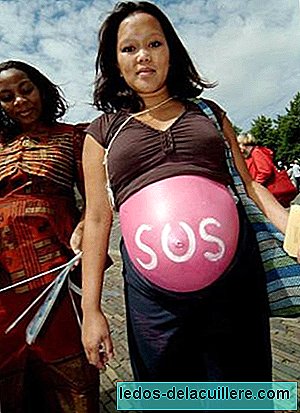
Vaginal delivery, natural birth, normal delivery, medicalized delivery ... We have many terms to refer to borderline and sometimes confusing concepts. Let's stop at the definition of normal delivery, according to the World Health Organization.
WHO prepared a document entitled "Care in normal delivery: a practical guide", a report submitted by the Technical Working Group of the Department of Research and Reproductive Health. In one of his first points he raises the definition of "normal birth."
Is a provoked birth considered a normal birth? And a birth in which the mother receives epidural anesthesia? Let's look at the WHO definition to know what we are talking about when we refer to "normal birth."
When defining it, two factors are taken into consideration: the risk status of pregnancy and the course of labor and birth. Although they point out that predicting the risk in childbirth is quite complicated.
This implies that a pregnant woman who is supposed to be at low risk when labor begins may at any time have a complicated birth, or vice versa: many pregnant women cataloged at high risk have a delivery and delivery free of complications.
Within these difficulties, The definition of "normal delivery" is as follows:
We define Normal Birth as: spontaneous onset, low risk at the beginning of labor, remaining as such until delivery. The child is born spontaneously in a cephalic position between weeks 37 to 42 full. After giving birth, both the mother and the child are in good condition.
As we see, what we know as provoked deliveries (which do not start spontaneously), premature births or caesarean sections are excluded.
But no reference is made to pain relief methods, so, in principle and according to this synthetic definition, both epidural births and those that use other pain relief methods would be included within the definition of “normal delivery”, provided that they do not influence the rest of the points to consider normal delivery (that do not involve risks, that mother and baby are in good condition).
Although, yes, in another section of the document he talks about the possible risks of epidural anesthesia and doubts that if this type of analgesia is applied in low-risk deliveries, these may continue to be called “normal”:
There is no doubt that epidural anesthesia is very useful in a complicated delivery. However, if this is applied to low-risk women, it will be necessary to ask whether the birth can still be considered “normal”. Naturally, the answer will depend on what we understand as normal, but epidural analgesia is one of the clearest examples of medicalization of a normal birth, making a physiological event a medical procedure.
Therefore, we would be in the area of the borderline when it comes to medicalization, although, saving the distances, is every birth attended by medical personnel not already medicalized?
And ultimately, according to the definition offered at the beginning, How many births can be considered normal? WHO notes that it depends greatly on risk assessments and local criteria. Generally, between 70 and 80% of all pregnant women can be considered as “low risk” at the beginning of labor.
Afterwards, the development and outcome of labor should be seen to verify that everything has followed its "normal" course. A difficult term to delimit and that implies its opposite.
But are there abnormal births? I only think of those of my rare dreams during pregnancy ... Is it normal today what a few decades ago was not? In the future will be normal deliveries that today are excluded from this delimitation?
As we see, it is not easy to establish the definition of what a normal birth is, but I think that WHO offers a fairly desirable and scientifically based approach in favor of the well-being of mother and baby.












